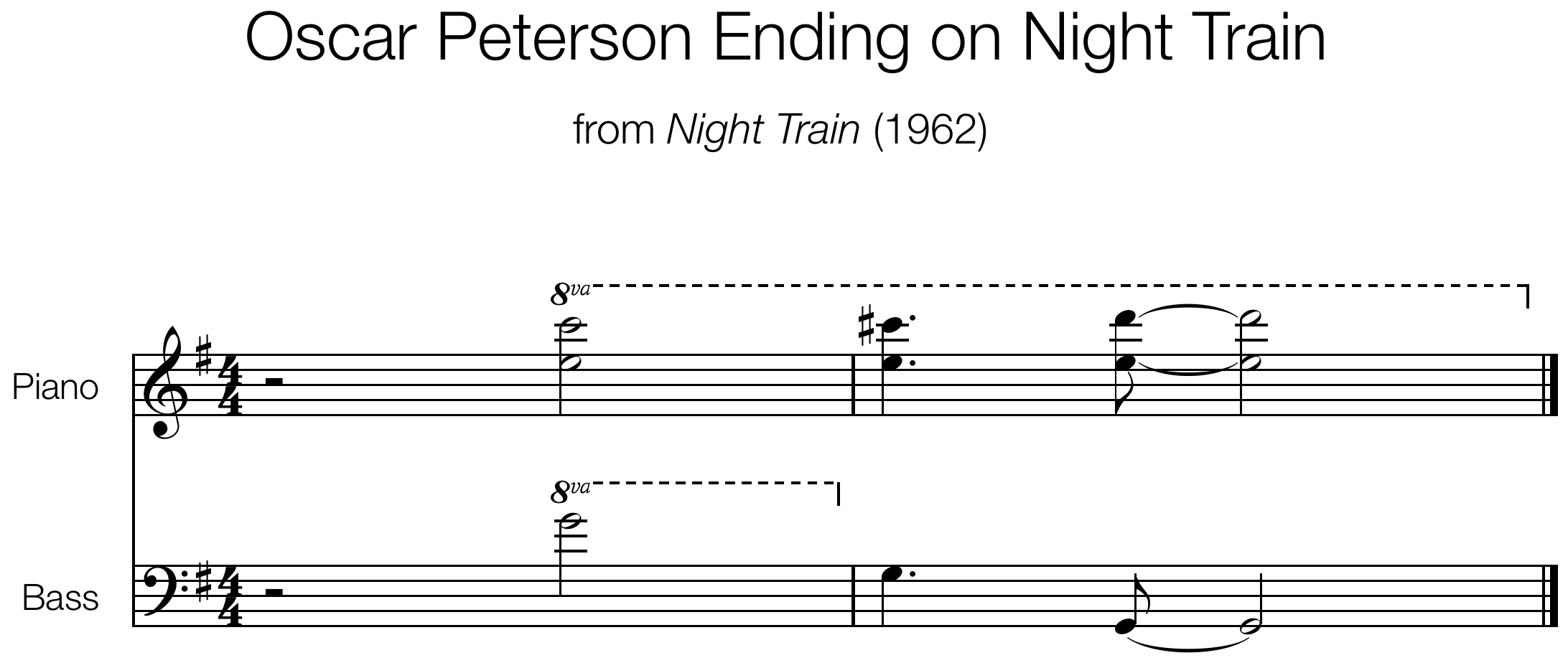Continuing the series on Intros & Endings, here is an easy ending that can be applied to many different tunes.
The melody for All of Me ends halfway through a four-measure phrase. When this happens, it works well to play an ending that finishes the rhythmic phrase, in this case two more measures.
Here is the two-measure ending that can be heard on Billie Holiday’s studio version of All of Me recorded for Columbia:
Using The Sound
Thinking in the key of F, notice the chromatic descent from the fifth of the chord and the chromatic enclosure of the third that eventually lead back to the root. In addition, the final tonic F6 chord is preceded by the same chord a half-step up, adding to the sense of finality when we finally hear the last chord.
This is a good ending to try in all keys because it is essentially a major triad with chromatic embellishments. The half-step shift at the end is also a common sound to be familiar with.
Consider using this ending when playing in a classic swing style at a medium tempo, especially when the melody of a tune ends part way through a four-bar phrase.

